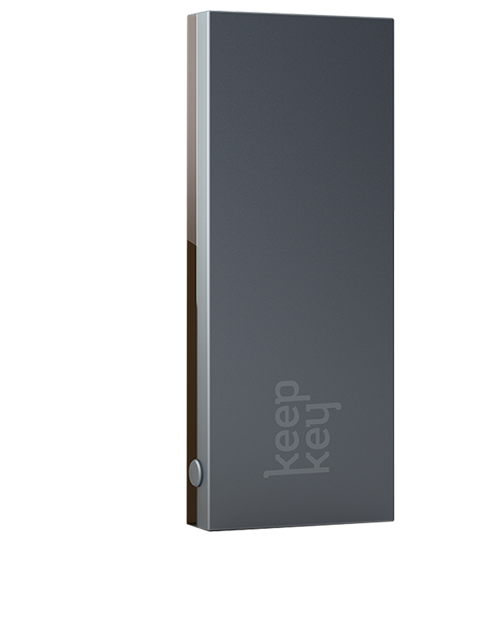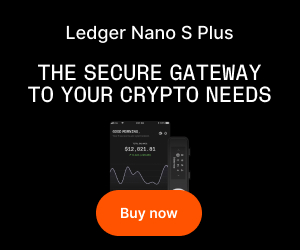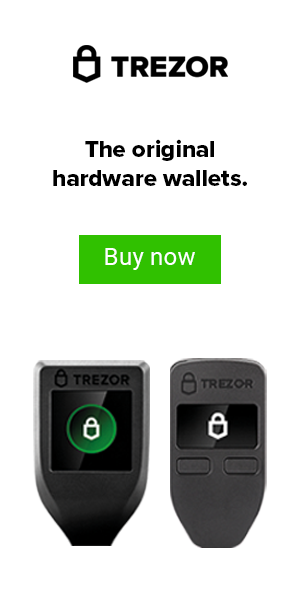You Might also like
-
Proof Of Work Vs. Proof Of Stake | How Does It Work? (Beginner’s Guide)
What is Proof Of Work Vs. Proof Of Stake | How Does It Work? If you spend enough time in the crypto-community and you’ll witness debates over Proof of Work (PoW) and Proof of Stake (PoS). Fans of PoW will argue that it’s the transaction system Satoshi Nakamoto had in mind for cryptocurrencies. Those in favor of PoS, on the other hand, will argue that mining is outdated, inefficient, and insecure compared to staking.
So you might be wondering, what’s the difference, is one actually better than the other, and why is it better? Well like most things here at Bitcoin Lockup, I am not here to give you my unsolicited opinions, but we are here to give you some objective information that might help you determine for yourself which proof has best proven its worth.
Proof Of Work Vs. Proof Of Stake | How Does It Work?
PROOF OF WORK


When Satoshi Nakamoto created Bitcoin in 2008, he envisioned a currency that would rely on a trustless and distributed consensus system. This would allow Bitcoin to be decentralized both in technological and financial terms. For instance, when you transact money through a trusted system, a third-party (think banks, credit/debit cards, PayPal) handles these transactions in terms of debit and credit. If Mark sends Sally $100 dollars, the institution will debit Mark’s account $100 dollars and credit Sally with $100. All of the money is handled by and within the third party, so none of the transacted funds belong to either Mark nor Sally until they are withdrawn from the system.


Bitcoin differs from traditional financial hubs by being trustless. This is not to say you can’t trust Bitcoin and blockchain with your money. In fact, it’s quite the opposite. Bitcoin’s trustless nature allows for a peer-to-peer exchange without the need for a third-party mediator.
The traditional mediators are replaced with miners, and these miners work on behalf of Bitcoin holders to see that transaction are successfully processed. In order to see that these transactions are approved, miners commit their computer’s processing power to solve the encrypted algorithms within each transaction. This is what we mean by Proof of Work.
Under a Proof of Work system, miners compete to verify that all the transactions within the candidate block (the block currently being built) are legitimate. To do this, they must solve the encrypted puzzles that verify the integrity of the transacted coins. The first miner to solve these puzzles receives an amount of the transacted currency, also known as a block reward. Once the problem is solved, the transactions create a block that is stored as a public ledger on the blockchain, and the miner announces the solution to the entire network.
As you can see, PoW is dictated by competition and computational output. Imagine an international math competition wherein a previously unsolved proof (the block) is given to the competitors (the miners). Whoever solves this proof first is awarded a prize (block reward), and the solved proof is then posted on the internet for all to see (the block being established in the blockchain).
PROOF OF STAKE
Proof of Stake differs entirely from Proof of Work. Instead of building blocks through work output, the creator of a block is determined by their share, or stake, in a currency.
Under this system, forgers (the PoS equivalent of a miner) are chosen to build blocks based on their stake in a currency and the age of that stake within the blockchain’s network. For instance, let’s say you hold 500,000 Cardano. First of all, allow me to hypothetically congratulate you on your fat stacks. Getting back to the example, under the Proof of Stake system, you’d be more likely to create the candidate block than someone with 100,000 ADA.


To go even further, if you had been holding your 500,000 ADA in the same address for a year, you’d be more likely to generate the next block than someone who also has 500,000 ADA but who has been holding it in a network address for half a year.
To give you another analogy, imagine if your odds to win the lottery increased based on a) how much money you put into it and b) how long you had been buying tickets. Now, you won’t make millions of dollars by staking your favorite PoS currency, but you can make some nice passive income on top of your investment gains.
It’s important to note that, for a stake to be chosen, it must be held on an address within the coin’s network. So if you were holding Cardano like in the above example, you would need to store it in Cardano’s core wallet. There are also no block rewards in the PoS system. Seeing as there’s no work-centric incentive to outcompete other miners, forgers are only awarded transaction fees.
There’s also a marked difference between Delegated Proof of Stake and regular Proof of Stake, but that’s for another article at another date.
PoW Coins:
PoW/PoS Hybrids:
–Dash
–Pivx
PoS Coins:
–QTUM
KEY DIFFERENCES AND TAKEAWAYS
Proponents of PoW will tell you it allows crypto to more effectively function as a currency. The PoS model, they argue, incentivizes users to stake their coins for extended periods of time, thereby making them inactive.
PoS fans, however, will defend their system’s overall superiority. For starters, it solves the problem of energy consumption that Bitcoin has created. As more transactions and users are added to Bitcoin’s network, more computing power will be needed to accommodate growth. The more computing power that is added to the network, the more the hashrate increases in difficulty. With more difficulty comes an increase in the amount of work a computer must generate to generate blocks, and this increased output leads to greater energy consumption.
Bitcoin’s growth and mining difficulty are exponentially tied to energy consumption, and critics see this as an unsolvable issue under the PoW model. It’s the reason that Bitcoin’s network alone consumes more energy than 159 countries.
Proof of Stake also defends against 51% attacks on the blockchain. As we’ve seen with the recent Bitcoin Cash and Bitcoin civil war, disproportionate mining power can lead to de facto centralization of a blockchain’s network. In order to control a majority of a PoS blockchain, a validator would have to own 51% or more of that crypto’s overall supply. So in order for someone to attack Cardano’s blockchain, for instance, they would have to $609,286,157.643 worth of Cardano to do so. I really don’t see that happening.
Both PoS and PoW have their ups and downs, and I’ll be excited to see how the market responds to coins that utilize either system or a hybrid of both. One last thing to keep in mind for PoW, however, is that once all a currency’s coins are minted and circulated, block rewards will cease to exist. This may incentivize PoW coins to update to a PoS model, but only time will tell.
Still don’t have cold storage for your private keys? click HERE for the Ledger Nano S to hold all of the PoW and PoS coins discussed above!
What do you think? Do you think PoS will overtake PoW in popularity? Sound off below!
Cheers,
The Crypto Renegade
NOTE: This post may contain affiliate links. This adds no cost to you but it helps me focus on giving as much value as possible in every single post by being compensated for recommending products that help people succeed.
Post Views: 0 -
Why Bitcoin Is The Ultimate Expression Of Freedom
In this article, I will prove why bitcoin is the ultimate expression of freedom. Most of us remember the financial crisis of 2008 pretty vividly. We saw the forefront of corruption come home and face reality when they couldn’t hide the truth anymore, and the banks weren’t the ones that paid the price. We did.
And to add insult to injury, once the government made the decision to bail out the banks, they took that freshly printed money and paid themselves all bonuses. Also, no one went to jail for these egregious crimes. There were virtually no consequences to their actions, so what’s to stop them from doing it all over again in a sneakier way or by way of a new mechanism?


ENTER BITCOIN’S CREATOR…
Whoever Satoshi Nakatmoto is saw this happening before we all did, and as a result, invented one of the most powerful tools the world has ever seen.
It was during this time that I believe Satoshi Nakamoto saw the writing on the wall and knew that what was happening on wall street and the large banks was unsustainable. We needed a solution that could not be corrupted, interfered with, or otherwise controlled by the “Authorities” in power.
On October 31st 2008, The Satoshi White Paper; A Peer-To-Peer Electronic Cash System was released to an small inner circle of cryptographers on a mailing list that Satoshi had kept note of. The initial reactions were mixed, but mainly filled with excitement, and some naysayers that said it could never work. They cited numerous examples of previous ventures that came close and failed, such as BitGold and eCash.


But bitcoin was different because it solved the “double spend” problem and created an elegant solution for verifying transactions in a decentralized way; he called this the “Blockchain“. In case you are unfamiliar, the blockchain is a public ledger that includes a batch of transactions that are all batched together in a “block” to be verified with hashing power of several computers to solve a mathematical problem.
This offered a financial incentive in the form of a “block reward” where the first computer (or group of computers) solved the puzzle to receive a payout of bitcoin for each block. At the start when the first blocked was mined in 2009, the reward was 50 bitcoins and was scheduled to be cut in half every four years until the 21 million supply cap runs out in the year 2140.
The overall concept presented a solution that no one had been able to crack before, successfully. It came very close in some other instances but Satoshi was able to create a fair, completely decentralized way that incentivized people to be honest, fair, and created a new economic model that was built on a deflationary mechanism. This is brilliant, because it’s the way Austrian economic legends like Von Mises and Murray Rothbard saw the ideal way for the economy to be a free and fair model. Free markets let the people decide where and how money was used, instead of the government.
WHY BITCOIN IS DIFFERENT?
Bitcoin is the ultimate expression of freedom. It is built on the principle that no governing body or power can dictate (through politics) when money should be printed and what it can be used for, but rather what the people vote on with their hashing power. This was laid out with an agreed set of very general rules and procedures that Satoshi created as a foundation. Now, people any where in the world at any moment can transact freely with bitcoin.
One of the world’s current problems is that there are approximately 1.7 billion people that are currently “unbanked”. That means they do not have access to any financial services because it is either not profitable for banks to be in their area, or they live in an authoritarian country where all finances are regulated and reported on how/when they use it. This is especially prevalent in countries like Venezuela where the bolivar went into hyperinflation and people had to stand in line, for sometimes days, to receive rations for food and medicine.


Think about how powerful it is that when it comes to bitcoin, you do NOT need to provide your name, your phone number, your social security number, your ID, or any other identifying information to transact with someone. You do not need permission from a government or a bank. You do not need anything except for an internet connection. That is extremely powerful and there is nothing else like it.
Venmo, for instance, has at least 3 to 4 intermediaries that is getting tracked before you can transfer from person A to person B, even if they are standing right in front of you. Additionally, if they decide to decline the transaction for any reason they see fit, you’re out of luck. You’d need to hop on the phone with a bank or another 3rd party to send YOUR money. They can censor any transaction at any time for any reason. Bitcoin is permission-less finance. You have the power to not only create your own bank account, but become your very own bank. This is why bitcoin is the ultimate expression of freedom.
CONCLUSION
In conclusion, since the beginning of civilization money has always been an expression of what you wanted or how you were feeling. What you wanted and needed, and how you communicated and expressed your needs and desires. Back then, it could’ve been anything from seashells and beads all the way to rare metals or statues. The type of medium didn’t really matter, it was something everyone in the ecosystem all agreed had value and thus, it was considered money. Bitcoin is an innovation that has limitless potential and it doesn’t start and end it peer-to-peer digital cash.


This is programmable unit of account and value. You can create automated smart contracts, you can encrypt private messages, you can even review and look at every transaction on the pseudonymous ledger of the blockchain for eternity. The applications are limitless, but most importantly, it is unequivocally, incorruptable. Once a transaction is completed, it cannot be erased or undone.
This is extremely powerful and takes away the human element of temptation or control. It’s a consensus-based algorithm and the truest form of democracy the world has ever seen. I am so grateful that this technology has come into existence in my lifetime and can pave a way for a new future for generations to come. The only limit of what this technology can do is only limited by our imaginations.
If you have any questions or comments on this post, please sound off below! I’d love to hear from you! Until next time…
Cheers,
The Crypto Renegade
NOTE: This post may contain affiliate links. This adds no cost to you but it helps me focus on giving as much value as possible in every single post by being compensated for recommending products that help people succeed.
Post Views: 0 -
Massive Bitcoin Stash of 40,000; Bitcoin Whale Moves $229 Million For Only 57 Cents
Massive Bitcoin Stash of 40,000; Bitcoin Whale Moves $229 Million For Only 57 Cents. As reported on May 1st, 2019, a bitcoin whale has moved over 40,000 BTC or over ($212 million) moved from one address (bc1q9sh6544xls87x7skjzyfhkty4wq7z76vn7qzq9) to another (bc1q5shngj24323nsrmxv99st02na6srekfctt30ch).
There are some theories floating around on Twitter as to who the whale is. Some people have speculated on Twitter that the whale is Bitcointalk user “Loaded” who is a well-known poster on the forum. Loaded is as well-known for his posts on the forum as he is for his stash of 40,000 BTC.
Further theories floated around on the forum itself that it was Loaded who made the transaction — although the user has not confirmed or denied that they made the transaction.
It should be noted that the Bitcoin in the address shows a pattern of moving from one address to the next for no apparent reason according to the transaction history on Blockchain.com.
Another thing to note is the first three characters of the address. ‘bc1’ means that the address is using the segregated witness (SegWit) protocol that currently accounts for 40% of all Bitcoin transactions according to transactionfee.info.


Segwit is a protocol that was introduced on the 23rd of August to make Bitcoin transactions faster and cheaper.
The amount of money used to move the $229,000 million was only 57 cents according to the data. Bitcoinist reported earlier, Bitcoin fees are often mismatched with how much the user should actually be paying. This mistake, according to researchers, was due to the fact that consumer wallets appear to incorrectly estimate the required fee.
Although the 40,000 Bitcoin transaction is no small amount, it pales in comparison to the transaction that occurred on the 10th of January this year.
A total of 130,004 BTC ($742,972,860.00) was sent to the following address. (385cR5DM96n1HvBDMzLHPYcw89fZAXULJP). To date, this remains as the second largest bitcoin transaction ever, with the largest being 500,000 BTC which occurred on November 16, 2011.
BITCOIN STASH: BITCOIN WHALES ACCUMULATE
The bitcoin whales in the market seem to be going through a period of accumulation. In fact, 100 of the largest bitcoin wallet addresses accumulated 150,000 extra bitcoin.
One news site Bitcoinist did the math on this accumulation and deduced that they came from wallets holding less than 1,000 and 10,000 BTC. So the ‘rich’ are getting richer — many of which belong to exchanges — while the less-informed crypto speculators continue dropping bags.


WHY THIS BITCOIN WHALE MATTERS
Consider this for a moment. If you were to go to a bank and you were a high profile client and wanted to make a large transfer such as this anonymous bitcoin holder made, firstly, you would need to make an appointment. Secondly, you would need to go in person during standard business hours and shake hands and meet with certain individuals and make pleasantries before you could actually conduct your business. In other words, it’s an ordeal before the transaction has even begun.
After the charade and process of meeting and greeting, you then need explain your situation. Why are you sending this amount of money? Where are you sending this money? Which bank is receiving this money? Can we record or report this transaction and your explanation to the IRS directly, or do you already have a notarized letter from a CPA? Can we see two forms or ID?


…This is just the beginning of a series of questions you might encounter when trying to move your money from location A to location B when dealing with a bank. This is all before you are actually “authorized” to move your own money.
When you’re dealing in bitcoin, you don’t need permission, you don’t need to submit ID, you don’t need to wait 7-10 business days. It happens virtually instantly with the click of a button. Understand how powerful this is. Not even the most powerful and connected of business men can bypass the security and tracking that goes on with a bank and dealing with “regulation” of the legacy financial system. Additionally, consider the banking “fees” they would impose (after they’ve approved you to move your money after vetting not only yourself, but the recipient) for moving that sum of money.
As an example, international wire transfers at Fidelity charge upwards of 3% of the total transaction amount to wire this amount. For those of you who do not want to do the math, that is $6,780,000.00 as a fee to move this money. With bitcoin, this person did it with 2 quarters and a few pennies worth of fees.
That is why this is the future. I see this technology as inevitable for the entire world to adopt, because the bankers are far too greedy. Additionally, they see no problem with what they charge and why they do it. They will continue to blow bitcoin off as a valuable means of exchanging value, but as you can see above, it’s happening and it’s very possible.
FIRST STEP TO BECOMING YOUR OWN BANK
Part of becoming your own bank is first understanding the risks and responsibilities that goes with self-sovereignty. This is an amazing gift, but should be take very seriously and with the utmost care and responsibility. There is no 1-800 number to complain to when you mistype an address or you make a mistake. There is no one that can reverse a charge, or give you a refund. This is an irreversable, yet incorruptable form of dealing with money.
I do not say this to scare you, yet rather to implore you to double check everything you do and engage in the proper research when learning about making cryptocurrency transactions. The website you are on offers a myriad of valuable information ranging from beginners to experts in the space and provides a wealth of information, as well as tools to assist you in your crypto journey.


If you are new (or advanced), I recommend obtaining a hardware wallet to store your private keys offline, safely and securely to ensure that you are not risking your life’s work. The best one with the easiest to use interface that I’ve been recently using a lot is called “KeepKey“. This device has been around for several years now and is considered a widely used and respected device. I use it personally almost every day. Additionally, I have been testing their brand new unified platform that is currently in beta and it is BY FAR the easiest to use hardware wallet experience I have used.
It is extremely impressive and I can’t wait for all of you to see it. In the meantime, their existing platform is still very intuitive and user friendly, but the upgrade that is coming definitely a game changer. For more information on this device and to purchase directly from the KeepKey’s Official Website.
What do you think? Is this the first evidence in a shift in global finance to bring cryptocurrency mainstream? Sound off below!
Cheers,
The Crypto Renegade
NOTE: This post may contain affiliate links. This adds no cost to you but it helps me focus on giving as much value as possible in every single post by being compensated for recommending products that help people succeed.
Post Views: 0











